In the seventh of our series on the writers and artists who influenced the present generation of rail enthusiasts, Robert Humm recalls the life and times of the photographer, film maker, and pioneer preservationist Patrick Whitehouse.
A phenomenon of the golden age of railway enthusiasm – those four decades of the 1950s to 1980s – Pat Whitehouse was a supremely well-organised and persuasive ‘Mr Fixit’ with a string of achievements to his name. Preservation, books, broadcasting, photography, he contributed greatly to them all.
Monthly Subscription: Enjoy more Railway Magazine reading each month with free delivery to you door, and access to over 100 years in the archive, all for just £5.35 per month.
Click here to subscribe & save
Patrick Bruce Whitehouse was born in Warwick on February 25, 1922. In later life his photographs and notes were often initialled PBW and for brevity that is how I shall refer to him. His father, Cecil Whitehouse, owned a substantial construction company – B Whitehouse & Son – that was heavily involved in post-First World War renewal, new housing estates, blocks of apartments, and commercial and public buildings, mainly in the West Midlands.
His mother Phyllis, (née Bucknall), came from the Ellerman & Bucknall Lines shipping dynasty, a somewhat haughty family, who did not approve of their daughter marrying into ‘trade’ (shipowners were not trade, they were merchant princes).
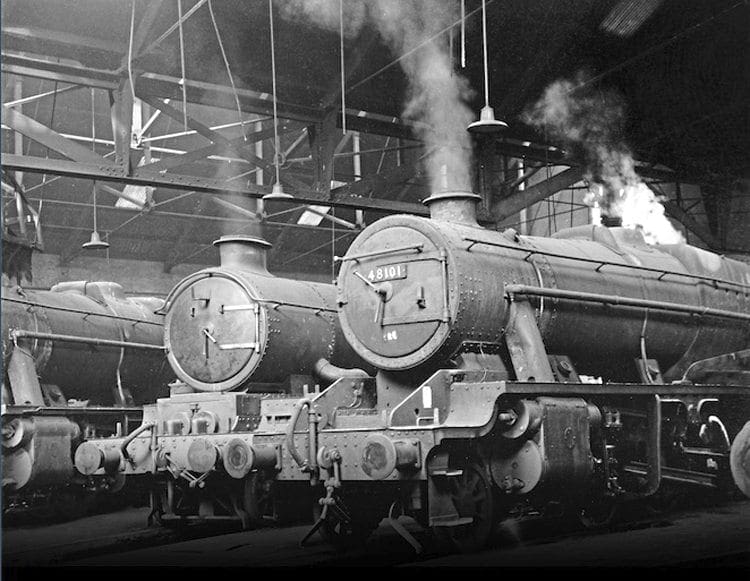
In the 1920s and 30s Whitehouse family holidays were often spent in West Wales,
where the Welsh narrow gauge lines were on the doorstep for exploration. It was undoubtedly there PBW developed his lifetime devotion to the narrow gauge picturesque that was to be the subject of so much of his early writing and photography. In his early teens he owned a camera, and some of those photos, not at all bad, still survive.
After PBW completed his education at Warwick School it was intended he should join the family firm, but the outbreak of the Second World War put that on hold. He volunteered for the RAF, where his wish to become a pilot was foiled by less than perfect eyesight. He did however qualify as a navigator, completing his training in Canada under the Empire Air Training Scheme.
Back in Britain he was posted to 15 Squadron and completed three tours of duty (each of 30 flights) in Lancaster bombers during the air campaign against Germany and occupied Europe. That in itself was remarkable: the chance of survival was less than 10 per cent. For the rest of the war he served in the supposedly less arduous Transport Command in the Middle East. There, he was shot down over the Mediterranean and was the sole survivor of the crew. After four days adrift in an inflatable he was rescued by a Greek freighter. By the time of demobilisation he had reached the rank of squadron leader.
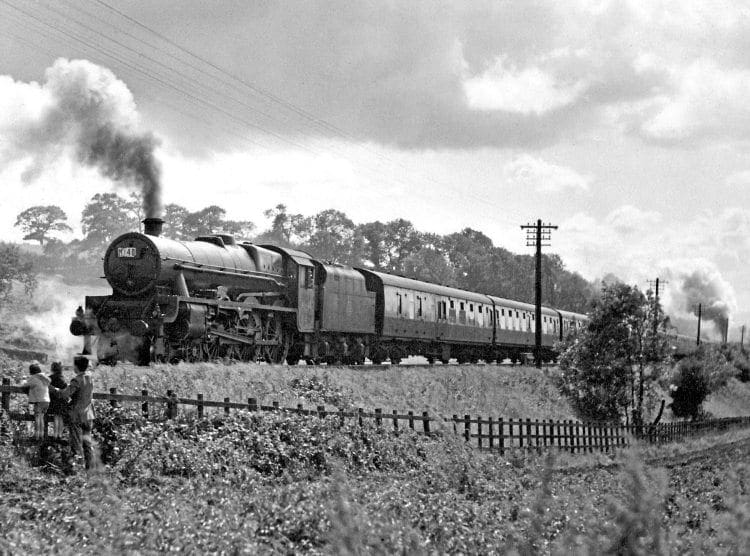
Resuming civilian life, PBW joined the family firm, being third in command after his father and uncle. Eventually, he became chairman until he sold the business to Holland Hannen & Cubitts in 1964. To round off briefly the construction industry side of his story, PBW remained a director of Cubitts until about 1970, after which he devoted himself entirely to photography, writing, editing, model making, and railway preservation.
In 1948 he married Thelma Crosbie, someone clearly sympathetic toward railways as she was to become the first woman volunteer on the Talyllyn. Their son Michael was born in 1952 and daughter Maggy in 1956.
Meanwhile, PBW became further immersed in the railway hobby. In 1948 he bought a medium-format Rolleiflex twin-lens reflex, and this was the camera of choice for the best of his black and white photography. By the mid-50s he felt sufficiently proficient to submit a portfolio of railway views for associate membership of the prestigious Royal Photographic Society. Many of those photographs were taken at Tyseley locomotive depot, a steam shed that was, and still is, central to the Whitehouse legend over many decades. By now PBW was a full member of the ‘Birmingham Railway Mafia’, centred upon the Birmingham Locomotive Club and the West Midlands branch of the Stephenson Locomotive Society. They were highly influential and knew where to pull the strings to run unusual rail tours or film in difficult locations.
One of his earliest recorded post-war jaunts was the famous 1947 last passenger train on the Ashover Light Railway in Derbyshire, organised by the SLS. Eighty-eight participants set off from Clay Cross in four open wagons behind the little Baldwin 4-6-0T Joan. The general manager gave his blessing: “The line is yours for the day and come back whenever you like.” It was a different world then – no red tape, no hard hats, no hi-vis clothing.
The Irish narrow gauge was another magnet for PBW. He, and many others, were inspired by H Fayle’s Narrow Gauge Railways Of Ireland, then recently published, and the first comprehensive book on the subject. In May 1950, Pat and Thelma were among the first post-war visitors from England, the objective being to participate in the monthly double-headed ‘cattle fair’ specials on the Tralee & Dingle, mostly chasing the trains by car. A second visit, this time accompanied by E S Russell, was made in July.
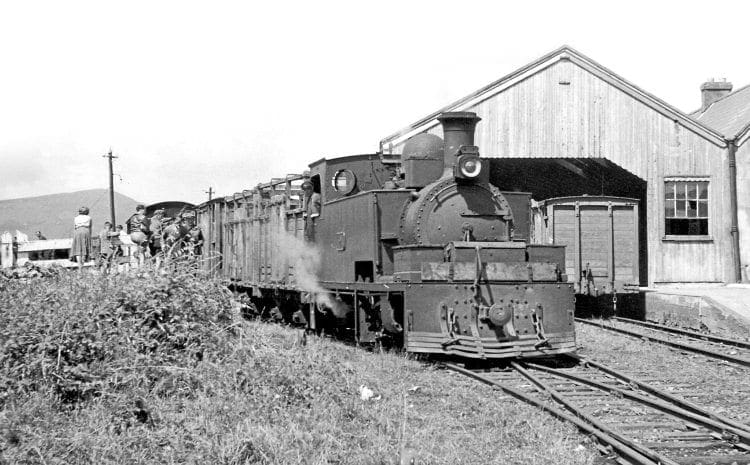
Two further trips were made in 1951 and 1952, and on the latter occasion the party included Ian Allan and the locomotive inspector/enthusiast A J Powell. The Tralee & Dingle yielded some of PBW’s most evocative narrow gauge photographs. He and Thelma also visited several of the other Irish narrow gauge lines, including the County Donegal and West Clare.
All the rest of the narrow gauge fraternity were there too: Ivo Peters, P C Allen, the Jarvis brothers, Arthur Camwell. Henry S Orbach, Vic Goldberg, J H Price, Cyril Fry, Brian Hollingsworth, and many more. The T&D was the subject of one of PBW’s earliest books, written in conjunction with John Powell and published in 1958. It was, he commented, the last wilderness railway left in the British Isles
Ireland also cemented friendships that were invaluable to his later career as a writer, editor and film maker. The photographer John Adams, as well as printing most of PBW’s photographs, was co-author of at least 12 of the books, and of course co-presenter of Railway Roundabout, an episode we shall come to presently.
P C Allen (later Sir Peter Allen, chairman of Great Britain’s largest industrial company, Imperial Chemical Industries) co-wrote three of the more substantial narrow-gauge books: Narrow Gauge Railways Of Europe, Round the World On The Narrow Gauge and Narrow Gauge The World Over.
These Irish adventures whetted PBW’s appetite for further overseas railway exploration, and throughout the 1950s he went on annual tours to Europe, most frequently to France, but also to Switzerland, Italy, Austria and Yugoslavia. In the 1970s and 1980s there were travels further afield to South America, Africa and China.
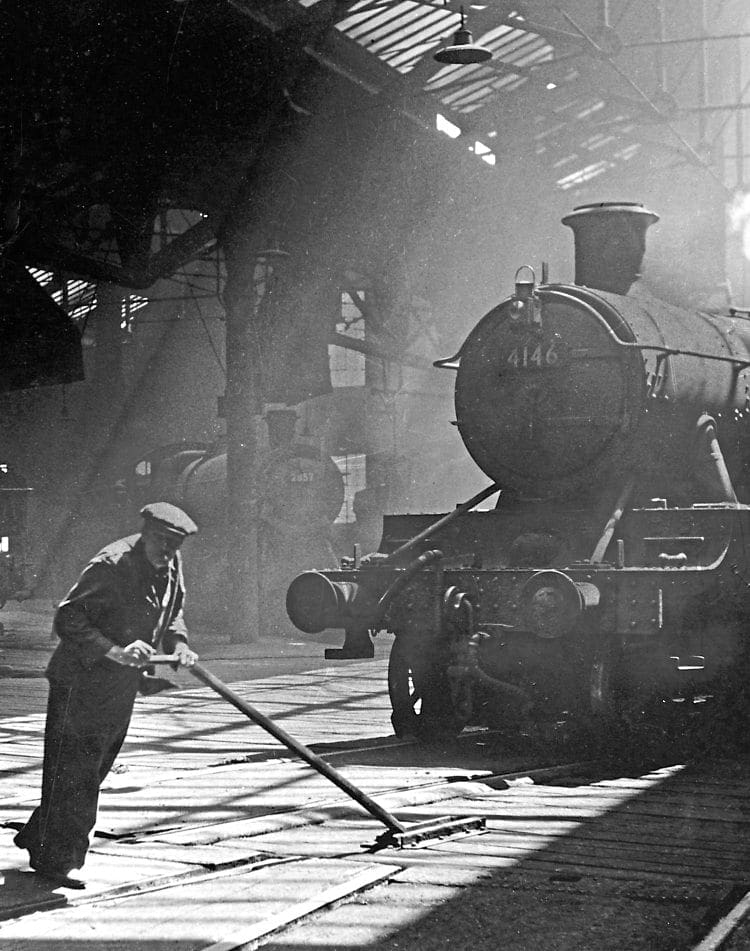
When L T C Rolt convened the historic meeting at the Imperial Hotel, Birmingham, on October 11, 1950 to explore ways and means of rescuing the Talyllyn Railway, PBW was among the many of the Birmingham fraternity to heed the call. By the end of the meeting he was somewhat bemused to find himself the secretary of the new Talyllyn Railway Preservation Society (TRPS), with Bill Trinder as chairman, Patrick Garland as treasurer, David Curwen as locomotive engineer, and Tom Rolt as general manager.
Rolt and Curwen were very much hands-on at Tywyn, but otherwise the higher management of the line, in those days more than three hours drive from the West Midlands, was entirely a Birmingham matter.
With his building industry connections,
PBW was able to give a great deal of practical assistance and materials to the arduous tasks of restoration, and in later histories there are references to the ‘Whitehouse lorry’ being called upon to transport awkward items of railway machinery. He remained a council member for 15 years, and it was by no means all administration because during those years he became experienced as a locomotive fireman as well.
I have described these early activities at some length because they were, in effect, an extended apprenticeship in railway lore that was to serve PBW well for the rest of his life. The first book to bear his name was Lines Of Character by
L T C Rolt ‘in association with P B Whitehouse’, published in 1952. It arose from their joint involvement with the TRPS, and PBW’s contribution was picture research and fact-finding. As an established author Rolt had no pressing need to include PBW on the title page, but with typical generosity of spirit he was doubtless keen to encourage a writer-to-be.
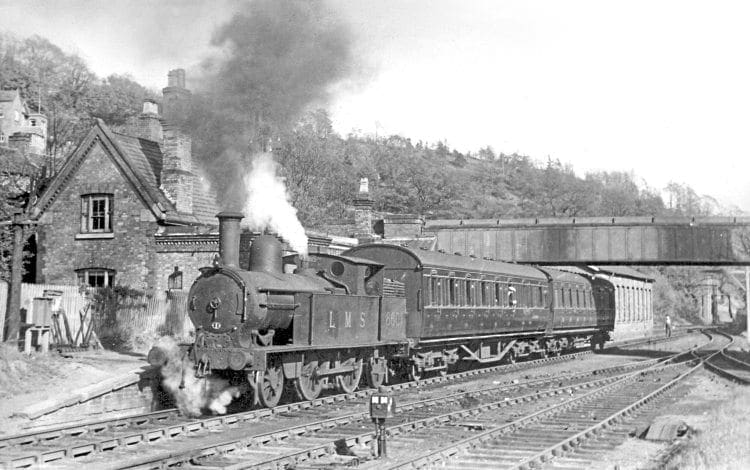
It was another five years before Pat’s first book in his own right appeared. Narrow Gauge Album (Ian Allan 1957) was notable in several respects. At a time when books about the narrow gauge were sparse on the ground and usually restricted to thin, cheaply produced monographs by specialist publishers such as Oakwood Press, it was an achievement for a new author to appear in a large format work of 142 pages hardback on glossy art paper. The book sold well and at least two more printings appeared in quick succession.
Ian Allan must have been impressed by Narrow Gauge Album, quickly realising there was money to be made from books on the narrow gauge as a subject, and from heavily illustrated albums as a genre. Books with ‘….Album’ in the title were an increasingly dominant feature of the Ian Allan list for the next 30 years, to some extent squeezing out the traditional company and locomotive histories. Pat rapidly established himself as a bankable author, writing or editing no fewer than 23 books for Ian Allan in the course of the next two decades.
As well as the Rolleiflex, PBW had inherited in 1947 an old Kodak 16mm movie camera. He used it to record main line steam at the time of Nationalisation, and it went with him on his first visit to the Tralee & Dingle – one of his best films according to railway film archivist John Huntley. I have already mentioned John Adams, and later in the 1950s the two joined forces, their first film together being of the Isle of Man railways in 1956. A chance meeting with a BBC producer at a local film show in Birmingham led to an introduction to Peggy Bacon, head of children’s programmes for the BBC, who commissioned the pair to make some full-length railway films for television.
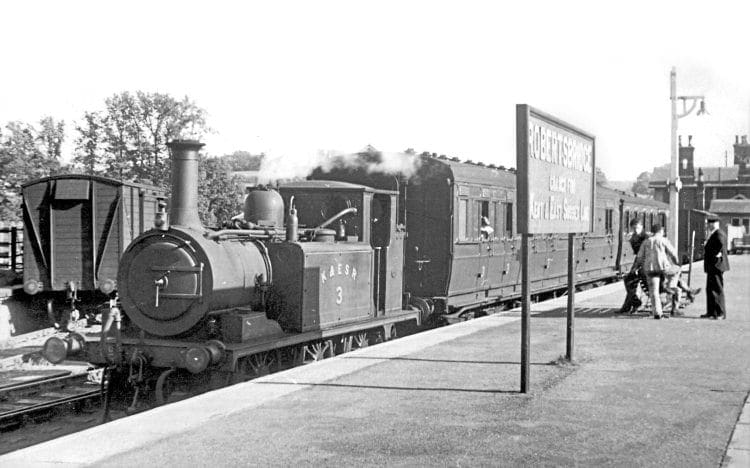
Thus was born the immortal Railway Roundabout series which ran for five years from 1958 to 1962. The programmes were themselves straightforward: 20 minutes or so of films introduced and linked by PBW and Adams, and presenting guests personalities such as Terence Cuneo and Lord Northesk to add variety. The films were mainly shot on monochrome stock as colour television was 15 years in the future.
Astonishingly, the production process was all delightfully straightforward. These days there would be men with headphones, multiple cameramen, sound recordists, important-looking persons with clipboards, and all the rest.
Not so in 1958. The presenters were supplied with a Bolex camera apiece, unlimited quantities of film, and sent off into the far yonder to get results. They were given no training in studio techniques, and as the programmes went out live they had to be word-perfect. It is not surprising the introductions were a trifle stilted to begin with, but the pair soon relaxed. Sadly, although the films survive, the commentaries were unrecorded and we have lost those voices of 60 years ago.
Railway Roundabout was perfectly timed. It arrived in that pivotal half decade for railways in Britain and their legions of devotees. In 1958 there was barely a main line diesel locomotive anywhere, but there were plenty of scenic routes, choice branch lines, vintage locomotives and special workings to film. By 1962 the end of steam was in plain sight, diesels and multiple units ruled the rails, and the ‘great and good doctor’ (Beeching), about to assume office, had stern views upon the cost of railway fun.
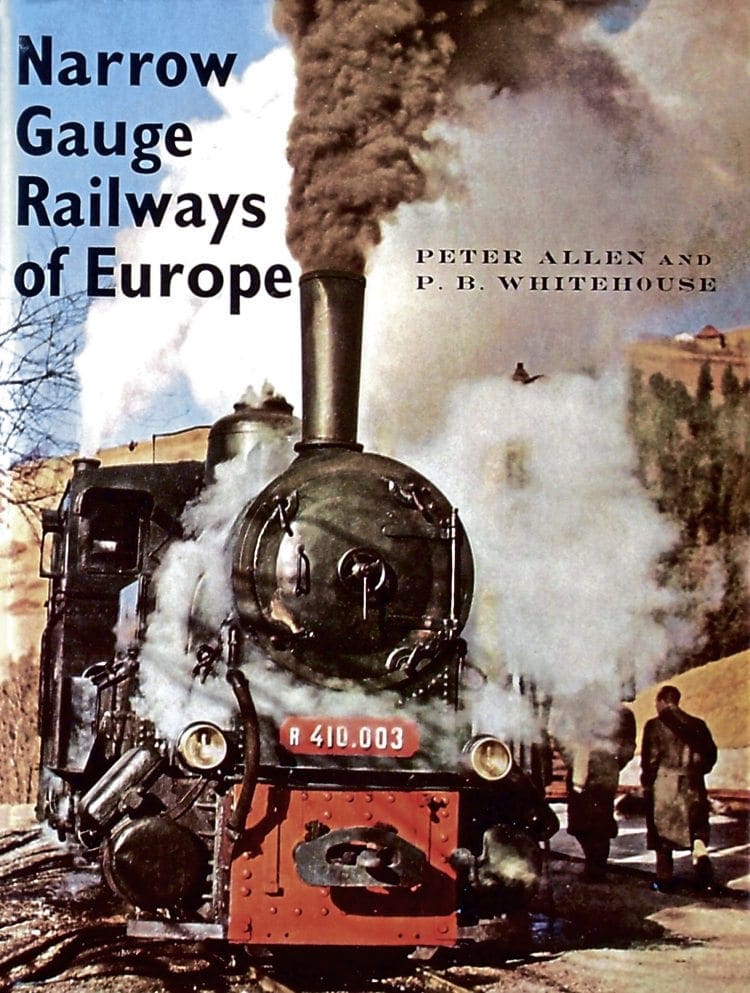
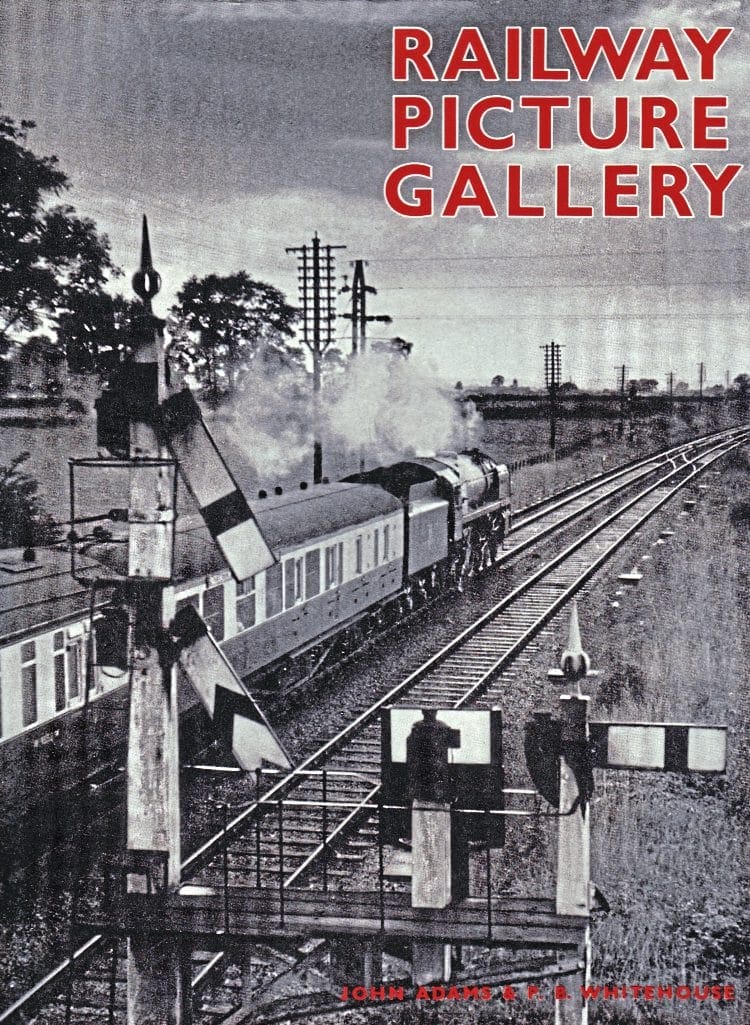
Peggy Bacon had, as I say, intended the programme for children, and it was shown in a suitable early evening slot. However, clearly Pat and John ignored all that – they wanted to speak to their own generation of enthusiasts in a straightforward and adult way, and if the children happened to like it as well that was a bonus.
The writer recalls his own reaction. As a sophisticated 14-year old (so he thought) he would not be seen dead watching anything so embarrassing as children’s television. Yet these programmes could not be missed for a moment. On ‘Roundabout’ evenings after-school activities languished and the head of the history department, one of South Hampshire’s leading rail fans, was nowhere to be seen. The programme introduced us to unimagined exotica in distant places: the West Highland Line, the Cromford & High Peak, Saltley sheds, the Lickey Incline, the Somerset & Dorset. One day, when we were a bit older and had some money, perhaps we could go there too? It was eye-opening and set us up for life!
John Huntley estimated that jointly and individually Adams and Whitehouse were responsible for 137 short railway films –
“a remarkable legacy” in his considered opinion –
of which about 100 were seen on Railway Roundabout. They continued filming for several years afterwards, including Paris Terminus, Mauritius Railway, Snow Train (snow ploughs on the Furka Oberalp in Switzerland – PBW’s favourite), and Castle From Bristol.
By the early 1960s, with ‘Roundabout’ finished and the Talyllyn well established, PBW was looking for new challenges. Henceforth, his main focus would be on the standard gauge. The first step was to acquire a locomotive, and ownership of the Great Western Small Prairie 2-6-2T No. 4555 came about in a curious way.
In 1962/63 B Whitehouse & Son had rebuilt a bridge at Walsall station in the course of which the specification was constantly altered and the costings went through the roof.
Eventually, the matter was resolved at a meeting between PBW and general manager Stanley Raymond (subsequently Sir Stanley Raymond, soon to become Beeching’s successor as BR chairman). After the meeting ended Raymond asked politely whether he could help with anything else. PBW replied: “I’d like to buy one of your steam locomotives if I may.” Raymond, rather taken aback, held a hurried discussion with the assembled minions and an unstated message: “Give this man whatever he wants, just get him out of my hair.”
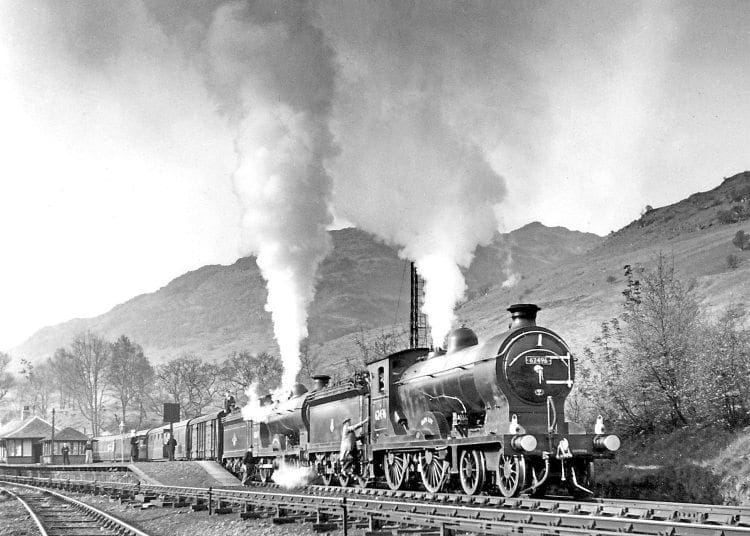
The outcome was that for the modest sum of £750 PBW and Pat Garland (another Talyllyn colleague) secured ownership of No. 4555, together with a light casual overhaul at Swindon, a spare boiler, a wagon load of other spares, and free delivery to Tyseley shed. The Whitehouse family firm repainted the loco in GWR green:
the two Pats were in business! In return for board and lodging No. 4555 was used for a year or two on light duties around the Birmingham district, and was well cared for by the crews as the depot pet.
Naturally, a GWR locomotive needed a GWR branch to run on. By this time the Bluebell and Middleton Railways had shown private societies could run standard gauge lines as well as narrow gauge. PBW, together with Pat Garland, Ian Allan and others, cast about for somewhere suitable.
Their first choice was the Kingsbridge branch in South Devon, but the track was already being lifted. There was better luck with the nearby Totnes to Ashburton branch, which was duly secured. The crucial difference was the intention to run the line as a commercial operation by a public company with paid staff.
In its first year the Dart Valley Railway carried 60,000 passengers and was profitable from the start. Things soured when the Ministry of Transport compulsorily purchased the Buckfastleigh to Ashburton section for improvements to the A38 trunk road, and Pat lost interest after a couple of years. By nature he was a moving force, an organiser, but didn’t want to run things in the long term.
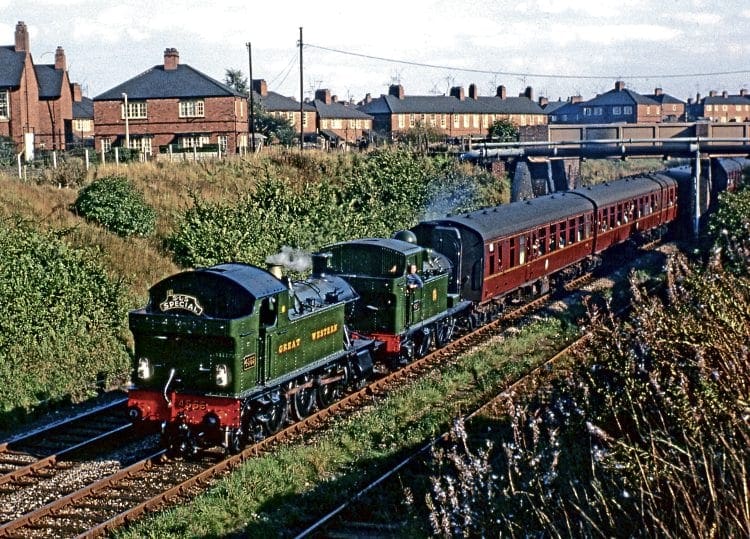
His ambitions continued to grow. In January 1966 Pat and John Evans topped up the appeal fund for one of the last surviving ‘Castle’ 4-6-0s – No. 7029 Clun Castle – at the scrap value of £2,400, together with permission to stable it at Tyseley. It was an historic locomotive.
One of the last of the class to be built, No. 7029 had achieved 96mph down Wellington Bank on an Ian Allan special on May 9, 1964, and the following year Clun Castle headed the last scheduled steam working out of Paddington.
A further locomotive arrived in 1967, this time the Stanier ‘Jubilee’ No. 45593 Kolhapur, one of the four surviving ‘Jubilees’ from Leeds Holbeck shed that in summer 1967 had given so many rail fans, your author included, their last taste of steam in everyday service over the Settle & Carlisle line.
To provide these locomotives with a permanent home PBW was instrumental in leasing the coaling stage and water tower area at Tyseley under the umbrella of the Standard Gauge Steam Trust. (The decaying roundhouse was demolished in 1968).
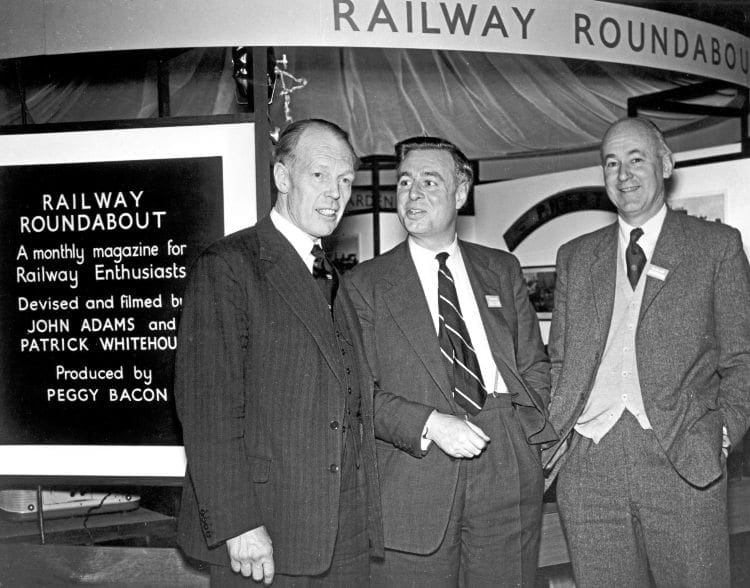
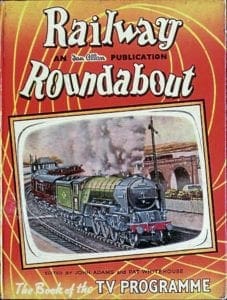
The subsequent history of Tyseley, later the Birmingham Railway Museum and now Vintage Trains, was described by Gary Boyd-Hope in the March 2017 issue, and need not be repeated here. Nevertheless, we should pay tribute to this initiative, PBW’s longest-lived and most significant legacy.
Authorship continued during these momentous years. Undoubtedly, the best book among the dozen with which he was involved during the sixties was On The Narrow Gauge (1964 Nelson), handsomely produced – Ronald I Nelson the publisher was also a railfan – and was a selective description of minor railways in Ireland, Wales, France, and not least the tribulations of filming in communist Yugoslavia. It is both thoughtful and entertaining, while the account of the idiosyncrasies of firing a ‘Fairlie’ on the Festiniog has never been bettered.
It was in the late-1960s PBW became involved in magazine and part-work editing. The first appears to have been a short-lived Ian Allan quarterly Steam Alive, which was one of several attempts to revive the corpse of the much loved Trains Illustrated. The idea of a magazine devoted entirely to railway and locomotive preservation was new, and PBW was as qualified as anyone to edit it. Alas it failed to catch on and expired after a dozen issues. Pat had more success with the publishers New English Library, which was running a number of part-works – gardening, cookery, modern warfare and the like – at that time. He edited at least three of them: History Of Railways, The Great Trains, and Model & Miniature Railways, large and colourful weekly magazines that built into an ‘encyclopedia’ over the course of a year. The publishing history of part-works went back many years and some senior readers will be familiar with the Clarence Winchester/Cecil J Allen vehicle Railway Wonders Of The World from the mid-1930s.
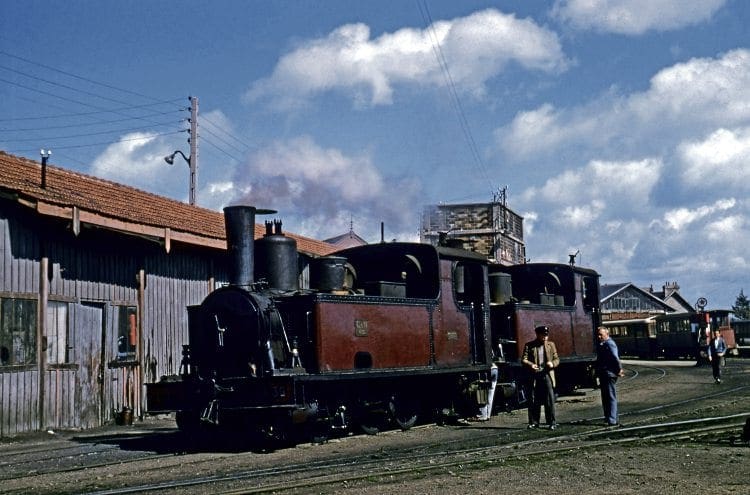
Part-works were a huge gamble, PBW once told me, when explaining their economics. “By means of heavy television advertising you should aim at an opening sale of about 300,000 copies, of which perhaps 100,000 subscribers can generally be relied on to stick it out to the end.
“If successful you stand to make a great deal of money, if not you have a very expensive flop on your hands. Then there is the extra income from binding the subscribers’ copies, and when the dust has settled chunks of the content can be reissued in book form for the Uncle Jim gift market.”
If my memory serves me right it was PBW who coined the expression “Uncle Jim book” to describe a book, any book would do, preferably at a big discount, bought in haste as a birthday or Christmas present.
In the last 18 years of his life, from 1975 to 1993, PBW became something of a cottage industry in the production of books for the popular market; 50 of them at least, and nine in 1976 alone. Very largely they were picture books that relied heavily on the vast Millbrook House photo library or the collections of collaborators such as G Freeman Allen, John Adams and David Jenkinson. The cognoscenti, those who wrote the learned tomes and the critical reviews, tended to be more than somewhat sniffy about them.
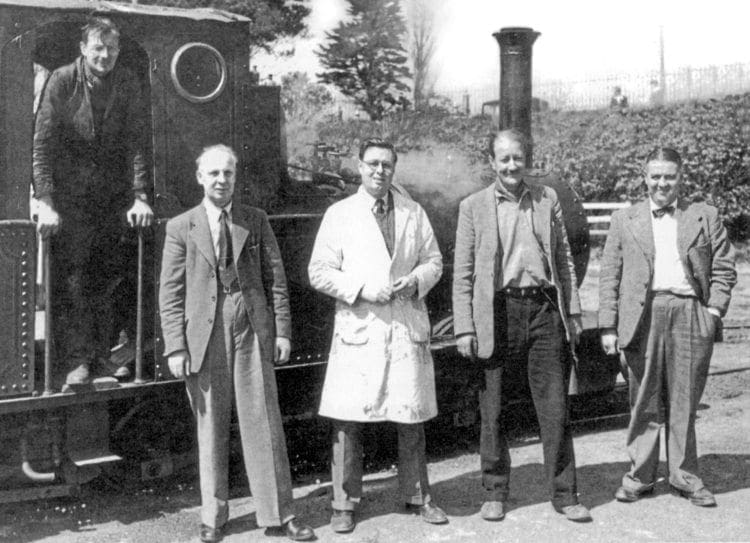
This sort of criticism bothered him. He was, to adapt the current idiom, writing for the many, not the few. As he once pointed out, a scholarly book will sometimes struggle to sell 500 copies, but The Great Western Railway: 150 Glorious Years sold 50,000. He recognised there was a large market for competently written yet easily digested books for reading for pleasure, and who better qualified than he to write them?
Although sometimes referred to by others as a railway historian, Pat may not have regarded himself as such. He was not one for delving into primary sources or the early history of unbuilt lines, and he could be fairly relaxed about dates or omit them completely. Speaking of these compilations, PBW said: “They are hardly lasting memorials, but they are fun to put together, pay well and enable me to travel the world.”
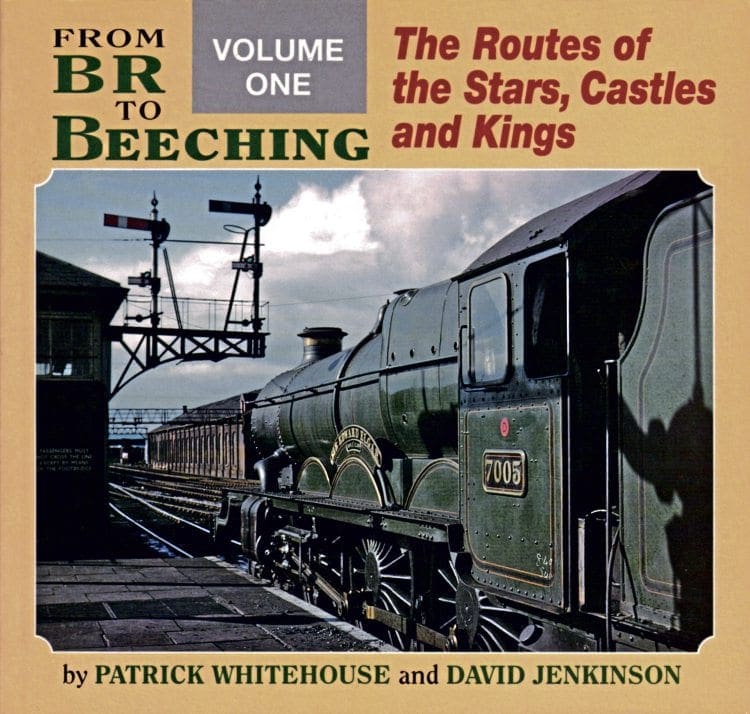
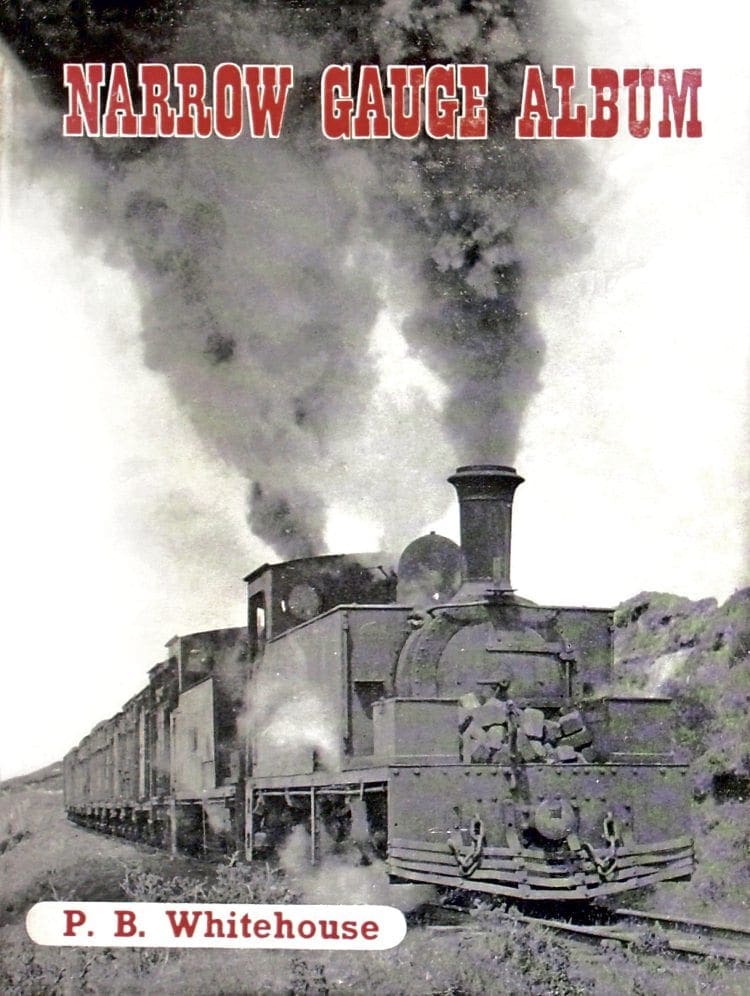
The best of the later works to bear his name were the dozen books edited in conjunction with David St John Thomas and published by David & Charles. They included the four ‘150’ books, and four in the Great Days series. It was very much a team effort, with PBW’s written contribution usually confined to a single chapter and a good deal of photo research. Cannily, he was always billed as the lead author. Last in the series was The Trains We Loved, a reworking of a familiar Hamilton Ellis title of 1947, and published post-humously. All were large format books on glossy paper, well written with excellent illustrations, and did much to overcome D&C’s 1970s reputation for publishing rather pinched-looking works.
Mention of Millbrook House is a reminder that as well as taking his own photographs PBW had for many years been acquiring the collections of fellow photographers in order to exploit them commercially. An early manifestation was the Colourviews Picture Library which, despite the name, provided both monochrome and colour material to the railway press. Millbrook House was created in the early 1980s to put Pat’s writing and photographic activities on a sound business footing. It was run from a property in Hagley Road, Birmingham, where David Johnson curated the collection and handled daily business.
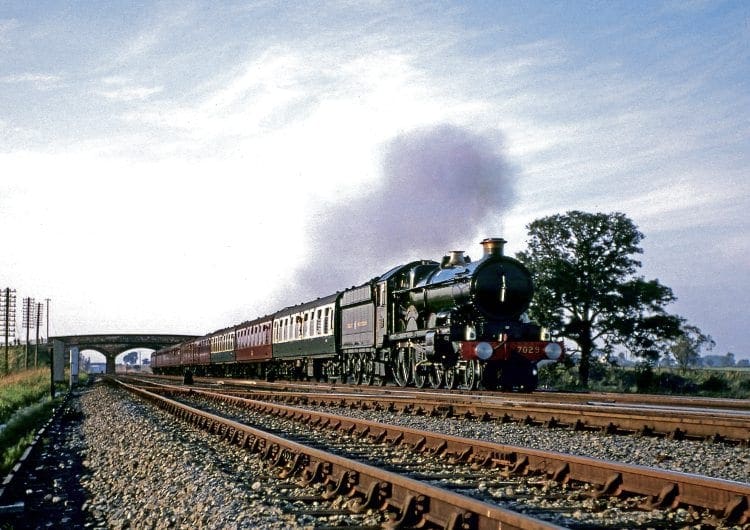
Most notable of the scores of acquisitions was the superb work of Eric Treacy. Other photographers represented included
A W Croughton, Eric Oldham, P M Alexander and Ken Cooper. At its peak Millbrook House held a quarter of a million railway images.
David Johnson continued the business for 10 years after Pat’s death, but it was wound down after 2003. The Treacy material went to the National Railway Museum, and some batches of negatives were sold off.
Pat Whitehouse died on June 17, 1993 at the relatively early age of 71, and after a life full of achievement. What assessment should we make?
As an individual he spoke quietly yet with the authority of those who had been thrust into the cauldron of war in youth. His name was familiar to a generation of railway enthusiasts for nearly 50 years in both the written word and visual arts. The reissue of the Railway Roundabout programmes on video has made PBW’s work available to a new generation.
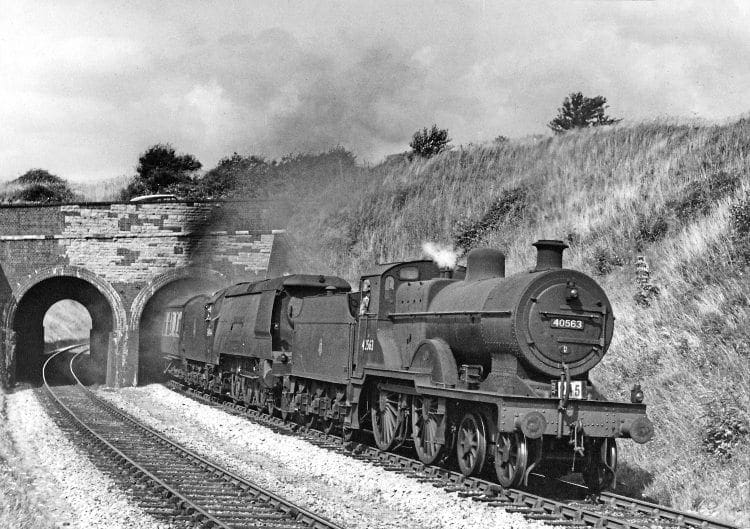
His early books have, in my view, stood the test of time. Of his later work it is right and proper to say the populariser has as important a role to play as the more scholarly writer. Pat conveyed his own enthusiasms and spoke to the ordinary enthusiasts in terms they understood. In his early days he did much to make the railway fraternity aware of the charms of the rapidly vanishing British and Irish narrow gauge lines, and later did the same for little-known lines in France and the Balkans.
Looking at his photographs today we can see they are not quite in the league of master practitioners such as Eric Treacy, John Adams, Colin Gifford and Brian Stephenson. Nevertheless, he managed to capture the mood of the moment, particularly of those run-down locomotives battling the elements in blustery western Ireland.
Above all Pat had the knack of being in the right place at the right time. Had he not been there would we have been any the poorer?
I am certain we would. ■
■ Acknowledgements: the writer is grateful for assistance from Michael Whitehouse and Peter Johnson.
The Railway Magazine Archive
Access to The Railway Magazine digital archive online, on your computer, tablet, and smartphone. The archive is now complete – with 122 years of back issues available, that’s 140,000 pages of your favourite rail news magazine.
The archive is available to subscribers of The Railway Magazine, and can be purchased as an add-on for just £24 per year. Existing subscribers should click the Add Archive button above, or call 01507 529529 – you will need your subscription details to hand. Follow @railwayarchive on Twitter.




